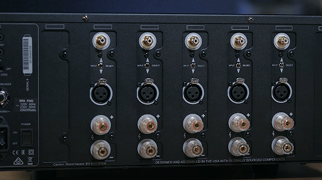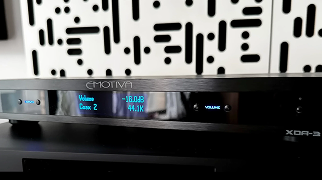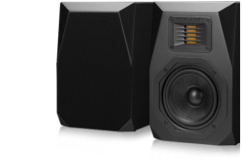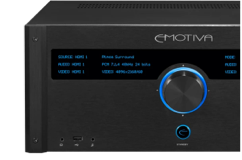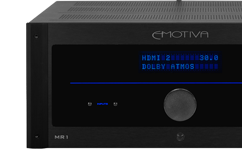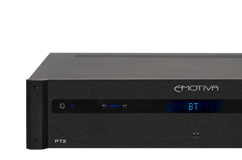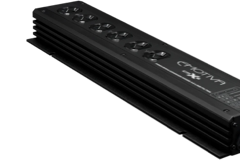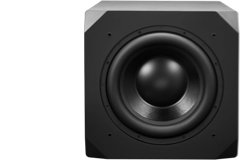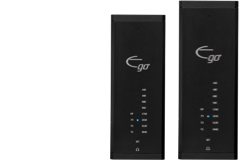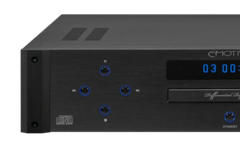
When it comes to audio gear, there are a lot more options today than ever before, which can make things a bit confusing – so let’s start at the beginning. To most modern audiophiles, when we use the term “preamp”, we’re talking about a stereo analog preamplifier. While some modern preamps have one or more digital inputs, and some include all sorts of extra features, a component with only digital inputs is usually called a DAC, and one that has HDMI inputs and supports surround sound and home theater is typically referred to as a processor or pre/pro.
A typical stereo preamp has several sets of analog audio inputs. While some modern preamps do a lot more things, the main purpose of a preamp is to let you select which input to listen to, control the volume, and pass that signal on to your power amp – all while being incredibly careful to do nothing that might compromise the sound quality. A high quality preamp is the control center of any really good stereo sound system. The key to choosing the ideal preamp for your system is finding one that does the basics really well, includes any extra features or capabilities that you may actually need, and doesn’t include too much extra stuff that will make it more complicated, and may actually compromise the sound quality.

Balanced Or Unbalanced
A lot of high quality audio gear has balanced input and output connections. While a balanced connection won’t necessarily sound different, it is much less likely to pick up unwanted noise or interference than an unbalanced connection, especially if you need long cables, or if your interconnect cables need to be run near power cables. Therefore, if your source equipment offers balanced outputs, or your amplifier offers balanced inputs, it makes sense to choose a preamp that has balanced inputs and outputs, and use balanced cables to connect them. If your other equipment isn’t balanced, then you won’t gain anything today by spending extra for a preamp with balanced connections, but you will be ready if you decide to upgrade to a fully balanced system later. (Our top of the line XSP-1 Differential Reference Stereo Preamp has balanced inputs and outputs – as well as many other features that are actually useful. If you don’t need balanced inputs and outputs, a unit like our more economical BasX PT-100 sounds almost as good, and is a lot easier on your budget.
A Pure Analog Signal Path
Most audiophiles who choose to purchase an analog preamp do so because they prefer the sound of analog gear. However, some modern preamps actually convert the incoming signal from analog into digital, process the signal digitally, then convert it back into analog on the way out. Contrary to what some audiophiles think, this can sound very good, and does increase the range of features which can be offered. However, we think that, in order to qualify as a true audiophile grade stereo preamp, the path traveled by the audio signal should remain analog all the way. At the very least, you should have the option of bypassing all of the digital processing and conversions if you choose to do so. (Our XSP-1 has a fancy digital display, a remote control, and microprocessor that controls everything, but the audio signal itself follows a pure analog signal path, through fully differential analog circuitry, and switched by gold plated relay contacts.)
A Phono Preamp
Both moving magnet and moving coil phono cartridges output a very low level signal. This signal must be connected to a special phono input, where it receives the extra gain and special equalization it needs. Not all stereo preamps include an internal phono preamp – so it’s something to look for if you listen to vinyl or plan to. Phono cartridges come in two common types, moving magnet (MM) and moving coil (MC); most modern phono inputs will accept either, although the phono inputs on some vintage equipment only support the MM type. If you have a preamp without a phono input, and you decide to go that route later, you can always add a high quality external phono preamp like our XPS-1.

Digital Inputs
Some modern stereo preamps also include one or more digital inputs – which simply means that they’ve included a DAC inside the preamp. Many audio purists prefer to keep their analog and digital worlds safely apart – either because they don’t ever listen to digital or because they prefer to use a separate high quality DAC for their digital listening. Others prefer the convenience of having both analog and digital inputs on the same unit. If you don’t have any digital audio sources, then you may be better off choosing a purely analog preamp like our XSP-1, where you’re not spending money on complex digital circuitry you’re never going to use. However, if you do have both digital and analog sources, and you’re on a budget, you’ll find a product like our PT-100, which includes both types of inputs, to be a convenient and economical choice.
Tone Controls
With a lot of vintage audio gear, it was impossible to be sure that the tone controls were out of the circuit, even when you didn’t want to use them. This is one of the reasons why many audiophiles dislike tone controls - and some audiophile preamps omit them entirely. We feel that tone controls can be useful, as long as they’re designed properly, and do nothing to compromise sound quality when they’re not being used. On our XSP-1, we replaced the regular tone controls with precision relay controlled tone trims, which allow you more precise adjustments over a narrower range, and are there just to anable you to fine tune the sound of an already excellent system; other gear, like our PT-100, includes more conventional tone controls. (Our high end digital processors include sophisticated equalization and room correction options in addition to more standard tone controls.)

Complex Equalization And Automatic Room Correction
We think that automatic room correction, fancy equalizers, and those sorts of features are extremely useful – especially in complex home theater surround sound systems. However, because all of these advanced features can only be implemented in the digital domain, and because they really shouldn’t be necessary in a two-channel analog system, we really don’t really think they should be included in an analog preamp. (So they seem like they’re really part of a different discussion.)
Bass Management
Bass management is simply the technical name for keeping track of what happens to very low bass – and sending it to your subwoofer if you have one. Home theater gear has sophisticated bass management options, which are responsible for routing the low frequency effects channel found on most surround sound discs to your subwoofer, as well as handling the low bass from your other channels properly.
You usually don’t want or need that sort of complicated digital bass management on a stereo preamp. However, if you want to use a subwoofer today, or plan to add one later, you really will need some form of bass management. Because bass management can be expensive and complicated to add to a system that doesn’t include it already, we recommend that you choose a preamp that has high quality analog bass management built in, so it will be there when and if you need it.
Summary
Hopefully we’ve taken a little bit of the confusion out of choosing just the right preamp for your system. Of course, as usual, if you have any questions, or need any more detailed advice, we’re here to help you figure it all out.
Share Post



